
Historical Majesty of Patan Durbar Square
Discover the Historical Majesty and Cultural Richness of Patan Durbar Square – A UNESCO World Heritage Site in the Heart of Patan, Nepal.
Patan Durbar Square, located in the heart of Patan, Nepal, is a UNESCO World Heritage Site renowned for its stunning array of temples, courtyards, and palaces. This historical marvel serves as a testament to the rich cultural heritage and architectural brilliance of the Malla dynasty, which ruled the Kathmandu Valley from the 12th to the 18th century. Visitors to Patan Durbar Square are greeted by an impressive collection of intricately carved wooden and stone structures. The square is home to the ancient Royal Palace, which now houses a museum displaying a vast collection of artifacts, including traditional Nepalese art, sculptures, and historical relics. The Krishna Mandir, built entirely out of stone, is one of the most iconic temples in the square, known for its exquisite carvings and detailed architecture. Strolling through the square, tourists will find themselves immersed in the daily life of the locals. The area is bustling with activity, from religious ceremonies to local artisans crafting beautiful handmade goods. The square also offers a variety of charming cafes and shops, where visitors can enjoy traditional Nepalese cuisine and purchase unique souvenirs. Patan Durbar Square is not just a historical site; it is a living, breathing part of the community. The blend of ancient traditions and modern-day vibrancy makes it a must-visit destination for anyone traveling to Nepal.
Local tips in Patan Durbar Square
- Visit early in the morning to avoid crowds and experience the tranquility of the square.
- Hire a local guide for a more in-depth understanding of the history and architecture.
- Wear comfortable shoes as the area is best explored on foot.
- Respect local customs and dress modestly, especially when visiting temples.
- Try traditional Newari cuisine at one of the local cafes surrounding the square.
Historical Majesty of Patan Durbar Square
Patan Durbar Square, located in the heart of Patan, Nepal, is a UNESCO World Heritage Site renowned for its stunning array of temples, courtyards, and palaces. This historical marvel serves as a testament to the rich cultural heritage and architectural brilliance of the Malla dynasty, which ruled the Kathmandu Valley from the 12th to the 18th century. Visitors to Patan Durbar Square are greeted by an impressive collection of intricately carved wooden and stone structures. The square is home to the ancient Royal Palace, which now houses a museum displaying a vast collection of artifacts, including traditional Nepalese art, sculptures, and historical relics. The Krishna Mandir, built entirely out of stone, is one of the most iconic temples in the square, known for its exquisite carvings and detailed architecture. Strolling through the square, tourists will find themselves immersed in the daily life of the locals. The area is bustling with activity, from religious ceremonies to local artisans crafting beautiful handmade goods. The square also offers a variety of charming cafes and shops, where visitors can enjoy traditional Nepalese cuisine and purchase unique souvenirs. Patan Durbar Square is not just a historical site; it is a living, breathing part of the community. The blend of ancient traditions and modern-day vibrancy makes it a must-visit destination for anyone traveling to Nepal.
Iconic landmarks you can’t miss
Patan Darbar Square
Explore the architectural marvels and rich cultural heritage of Patan Darbar Square, a UNESCO World Heritage site in Lalitpur, Nepal.

Krishna Mandir
Explore the exquisite Krishna Mandir in Lalitpur, a breathtaking Hindu temple filled with intricate carvings and rich cultural heritage.
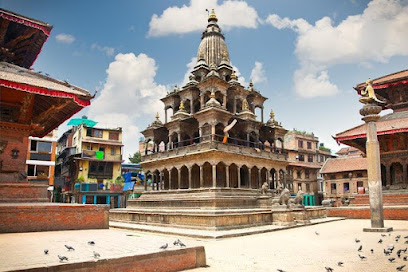
Patan Museum
Discover the artistic heritage of Nepal at Patan Museum, a UNESCO World Heritage Site showcasing exquisite artifacts and stunning architecture.

Yala Dhwakha - Patan Dhoka
Discover the enchanting Yala Dhwakha in Patan Dhoka, a historical landmark showcasing exquisite Newari architecture and rich cultural heritage.

Buddha Statue
Discover the serene beauty of the Buddha Statue in Lalitpur, a monumental symbol of peace and spirituality amidst stunning landscapes.

Taleju Bell
Explore the Taleju Bell, a historical gem in Lalitpur, symbolizing Nepal’s rich cultural heritage and spiritual traditions.

Patan Durbar Square
Discover the architectural wonders and cultural richness of Patan Durbar Square, a historical gem in Lalitpur, Nepal.

Bhandarkhal pokhari
Explore the natural beauty and historical significance of Bhandarkhal Pokhari, a serene pond in Lalitpur, Nepal, rich in culture and tradition.

Swotha Square
Explore the cultural heart of Lalitpur at Swotha Square, where history, architecture, and local life come together in perfect harmony.

Patan Durbar Square Handicrafts
Discover the essence of Nepali craftsmanship at Patan Durbar Square Handicrafts, where tradition meets artistry in every handmade piece.

Essential places to dine
Cafe De Patan
Discover authentic Newari and Nepali cuisine at Cafe De Patan in Lalitpur - where tradition meets taste.

Drishya Restaurant
Discover the flavors of Nepal at Drishya Restaurant in Lalitpur - where every dish tells a story.
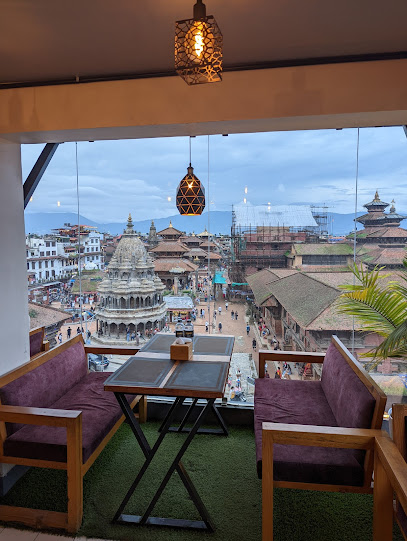
D Square Cafe Restaurant
Experience the best of Nepali cuisine and delightful bubble tea at D Square Cafe Restaurant in Lalitpur.

Cafe Du Temple Lalitpur
Discover Café Du Temple Lalitpur - A charming café offering local delights and international cuisine in a cozy atmosphere.

Casa Pagoda
Discover authentic Nepalese flavors at Casa Pagoda in Lalitpur, where delightful dishes meet warm hospitality.

Mo:Mo King Rooftop
Discover the essence of Nepali cuisine at Mo:Mo King Rooftop—home to delicious momos and breathtaking views.

Durbar Cafe
Discover authentic Nepalese flavors at Durbar Cafe in Lalitpur - where every dish tells a story.
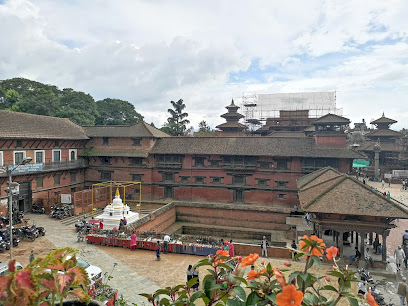
Patan Royal Cafe
Discover authentic Nepali flavors at Patan Royal Cafe in Lalitpur - where tradition meets taste!

Yala Layeku Kitchen
Experience authentic Nepali flavors at Yala Layeku Kitchen - your gateway to traditional cuisine in Lalitpur.

Mangale Restro
Experience authentic Nepali cuisine at Mangale Restro in Lalitpur—where tradition meets flavor amidst vibrant cultural scenery.

Markets, malls and hidden boutiques
PATAN TRADERS
Explore Patan Traders in Lalitpur for exquisite sarees and clothing that reflect the vibrant culture of Nepal at reasonable prices.

Patan Museum Gift Shop
Explore the Patan Museum Gift Shop for authentic Nepali handicrafts and unique souvenirs in the heart of Lalitpur.

Nepal Collection
Explore authentic Nepalese handicrafts at Nepal Collection, Lalitpur's premier souvenir store for cultural treasures.
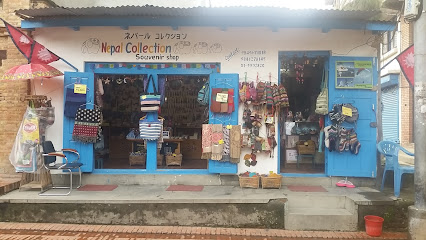
MAHAPAL GIFT SHOP
Explore Mahapal Gift Shop in Lalitpur for unique souvenirs and local handicrafts that embody the spirit of Nepal.

Anisha Fancy Store
Discover comfortable and stylish underwear at Anisha Fancy Store in Lalitpur, where quality meets local charm.

Gautam Gift Emporium
Explore the artistic heritage of Nepal at Gautam Gift Emporium, where magnificent handicrafts and unique gifts await your discovery.

Buddha & Bodhisattva statues or sculpture online store
Explore the exquisite collection of Buddha and Bodhisattva statues at this Patan gift shop, celebrating Nepal's rich artistic heritage.

BHUPESH STORE
Explore the fusion of tradition and modernity at Bhupesh Store, your go-to destination for unique clothing in Patan.

UNIQUE FASHION
Uncover the vibrant world of fashion accessories at Unique Fashion in Lalitpur, where every piece tells a story.

Evaan Store
Discover unique handcrafted gifts at Evaan Store in Lalitpur, where every item reflects the rich artistry and culture of Nepal.

Essential bars & hidden hideouts
Beers N' Cheers
Experience the vibrant nightlife at Beers N' Cheers, Lalitpur's top pub for craft beers, cocktails, and delicious bites in a lively atmosphere.

TITOS PUB N LOUNGE
Discover TITO'S PUB N LOUNGE, Lalitpur's vibrant pub offering live music, karaoke, and delicious food in a welcoming atmosphere.

Bunker Hill Pub
Discover the warmth and charm of Bunker Hill Pub in Lalitpur, where local culture meets a vibrant pub atmosphere.
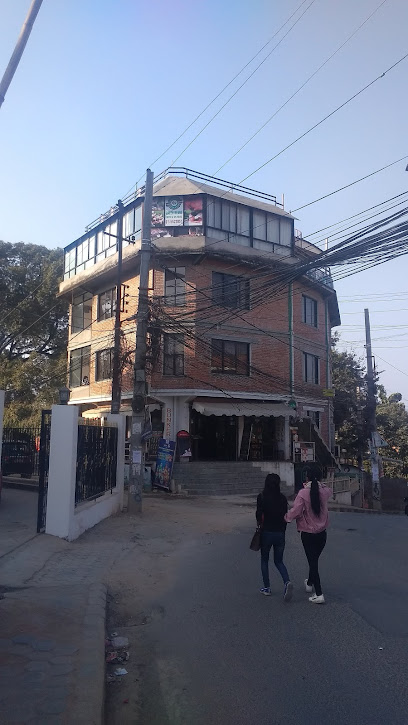
Vibes Restro And Lounge
Experience the perfect blend of relaxation and entertainment at Vibes Restro And Lounge in Lalitpur, where delicious cuisine meets live music.

.
Experience Lalitpur's vibrant nightlife at the best local bar, where great drinks meet a lively atmosphere.
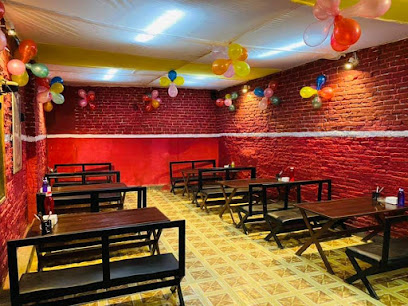
Fizzy Liquor Store
Explore Fizzy Liquor Store in Lalitpur for a vibrant nightlife experience with delicious drinks and a friendly local atmosphere.

PetPooja Restro & Bar
Discover the vibrant ambiance and delightful flavors at PetPooja Restro & Bar in Lalitpur, where every visit is a celebration of local culture.

Bar Bar
Experience the vibrant nightlife of Lalitpur at Bar Bar, where great drinks and live entertainment create unforgettable evenings.

Nepali Ghar Restaurant & Bar
Discover authentic Nepali cuisine and vibrant local culture at Nepali Ghar Restaurant & Bar in Lalitpur.

Durbar Snooker and Restro
Experience the vibrant atmosphere of Durbar Snooker and Restro, a top-notch bar in Lalitpur where snooker meets relaxation.

Local Phrases
-
- Helloनमस्कार
[Namaskāra] - Goodbyeफेरी भेटौं
[Phērī bhēṭauṅ] - Yesहो
[Ho] - Noहोइन
[Hō'ina] - Please/You're welcomeकृपया
[Kṛpayā] - Thank youधन्यवाद
[Dhanyavāda] - Excuse me/Sorryमाफ गर्नुहोस्
[Māpha garnuhōs] - How are you?तपाइँलाई कस्तो छ?
[Tapā'īnlā'ī kastō cha?] - Fine. And you?राम्रो छ। तपाईंलाई?
[Rāmrō cha. Tapā'īnlā'ī?] - Do you speak English?तपाईं अंग्रेजी बोल्नुहुन्छ?
[Tapā'ī angrejī bōlnuhuncha?] - I don't understandमैले सम्झिन
[Mailē samjhin]
- Helloनमस्कार
-
- I'd like to see the menu, pleaseकृपया मेनु हेर्न चाहन्छु
[Kṛpayā mēnu hērn cāhanchu] - I don't eat meatम भांसो खाँदिन
[Ma bhānsō khādin] - Cheers!चियर्स!
[Ciyarsa!] - I would like to pay, pleaseकृपया भुक्तानी गर्न चाहन्छु
[Kṛpayā bhuktānī garna cāhanchu]
- I'd like to see the menu, pleaseकृपया मेनु हेर्न चाहन्छु
-
- Help!मदद गर्नुहोस्!
[Madada garnuhōs!] - Go away!दुर्गम गर्नुहोस्!
[Duragama garnuhōs!] - Call the Police!प्रहरीलाई बोलाउनुहोस्!
[Praharīlā'ī bōlā'unuhōs!] - Call a doctor!डाक्टरलाई बोलाउनुहोस्!
[Ḍākṭaralā'ī bōlā'unuhōs!] - I'm lostम खोइएको छु
[Ma khō'ēkō chu] - I'm illम बिमार छु
[Ma bimāra chu]
- Help!मदद गर्नुहोस्!
-
- I'd like to buy...म खरीद गर्न चाहन्छु...
[Ma kharīda garna cāhanchu...] - I'm just lookingम सिर्जना गर्न गएको छु
[Ma sirjanā garna gēkō chu] - How much is it?यो कति हो?
[Yō kati hō?] - That's too expensiveयो धेरै महँगो छ
[Yō dhērai mahangō cha] - Can you lower the price?के तपाईं मूल्य माथि तल गर्न सक्छन्?
[Kē tapā'ī mūlya māthi tala garna sakchan?]
- I'd like to buy...म खरीद गर्न चाहन्छु...
-
- What time is it?कति बज्यो?
[Kati bajyō?] - It's one o'clockएक बजे भयो
[Ēka bajē bhayō] - Half past (10)दस बजे अर्को आधाघन्टा भयो
[Dasa bajē arkō ādhāghaṇṭā bhayō] - Morningबिहान
[Bihāna] - Afternoonदिउँसो
[Di'um̐sō] - Eveningसाँझ
[Sām̐jha] - Yesterdayहिजो
[Hijō] - Todayआज
[Āja] - Tomorrowभोलि
[Bhōli] - 1एक
[Ēka] - 2दुई
[Dui] - 3तीन
[Tīna] - 4चार
[Cāra] - 5पाँच
[Pām̐ca] - 6छ
[Chha] - 7सात
[Sāta] - 8आठ
[Āṭha] - 9नौ
[Nau] - 10दस
[Dasa]
- What time is it?कति बज्यो?
-
- Where's a/the...?कहाँ...?
[Kahām̐...?] - What's the address?ठेगाना के छ?
[Ṭhēgānā kē cha?] - Can you show me (on the map)?मलाई देखाउन सक्छ भने (नक्सामा)?
[Malā'ī dēkhā'un sakcha bhanē (naksāmā)?] - When's the next (bus)?अर्को (बस) कहाँ जान्छ?
[Arkō (basa) kahām̐ jāncha?] - A ticket (to ....)एक काटा (मा....)
[Ēka kāṭā (mā....)]
- Where's a/the...?कहाँ...?
History of Patan Durbar Square
-
Patan, also known as Lalitpur, was established in the 3rd century AD and is one of the ancient cities of the Kathmandu Valley. It was founded by the Kirat dynasty, and its strategic location facilitated trade and cultural exchange. The establishment of Patan Durbar Square marked the city as a significant political and economic hub.
-
During the Malla period (12th to 18th centuries), Patan became a center of art, architecture, and culture. The Malla kings were great patrons of the arts, and many of the temples and structures in Patan Durbar Square were constructed during this time, showcasing exquisite craftsmanship and intricate wood and stone carvings.
-
The devastating earthquake of 1934 caused significant damage to Patan Durbar Square, leading to the destruction of several historic buildings. However, this tragedy also spurred restoration efforts that helped preserve the architectural heritage of the square, allowing the community to recover and rebuild.
-
In 1979, Patan Durbar Square was designated a UNESCO World Heritage Site, recognizing its cultural significance and the rich architectural legacy of the Malla kings. This designation has helped promote conservation efforts and increased global awareness of Patan's historical importance.
-
In recent years, there has been a renewed interest in the preservation and promotion of Patan's cultural heritage. Local organizations and the government have initiated various projects aimed at restoring damaged structures, promoting traditional crafts, and enhancing the tourism experience in Patan Durbar Square, thereby reviving the vibrant culture of the area.
Patan Durbar Square Essentials
-
Patan Durbar Square is easily accessible from various neighborhoods in Patan. You can take a local taxi, which is the most convenient option. Alternatively, you can use the microbus service that operates frequently throughout the city. If you are coming from the Thamel area in Kathmandu, take a taxi or a local bus heading towards Lagankhel, and from there, it's a short walk to the square.
-
Patan Durbar Square is pedestrian-friendly, making it easy to explore on foot. You can walk to various attractions within the square and its surroundings. Bicycles are also available for rent in the area. Public transportation options like local buses connect to other parts of Patan, but they may not directly reach the square. Taxis are readily available for longer distances.
-
Patan is generally a safe area for tourists, but it's wise to remain vigilant. Avoid isolated areas, especially at night. The streets around the Patan Durbar Square are typically safe, but petty crimes like pickpocketing can occur in crowded areas. Be cautious in places like the small alleyways where tourists gather, and keep an eye on your belongings.
-
In case of an emergency, dial 100 for police assistance or 102 for ambulance services in Nepal. There are local hospitals and clinics nearby; it is advisable to have travel insurance that covers emergencies. Familiarize yourself with the location of the nearest medical facility, which can be found in the vicinity of the square, just in case.
-
Fashion: Do dress modestly, particularly when visiting temples and religious sites. Avoid shorts and sleeveless tops. Religion: Do respect local customs; always ask for permission before taking photographs in sacred areas. Public Transport: Do offer your seat to the elderly and women. Don't eat or drink on public transport. Greetings: Do use a polite greeting like 'Namaste' with a slight bow. Eating & Drinking: Do enjoy local eateries and try street food, but don't drink tap water; opt for bottled water instead.
-
To experience Patan Durbar Square like a local, visit the nearby artisan workshops where you can see traditional crafts being made. Engage with local shopkeepers and ask about their crafts; many are happy to share their stories. Don't miss the chance to explore the hidden temples and courtyards that may not be in the guidebooks. For a unique experience, try visiting during festivals, when the square comes alive with cultural activities.
Nearby Cities to Patan Durbar Square
-
Things To Do in Kathmandu
-
Things To Do in Bhaktapur
-
Things To Do in Nagarkot
-
Things To Do in Gorkha
-
Things To Do in Bandipur
-
Things To Do in Chitwan
-
Things To Do in Namche Bazaar
-
Things To Do in Pokhara
-
Things To Do in Patna
-
Things To Do in Lumbini
-
Things To Do in Darjeeling
-
Things To Do in Siliguri
-
Things To Do in Gangtok
-
Things To Do in Varanasi
-
Things To Do in Paro













